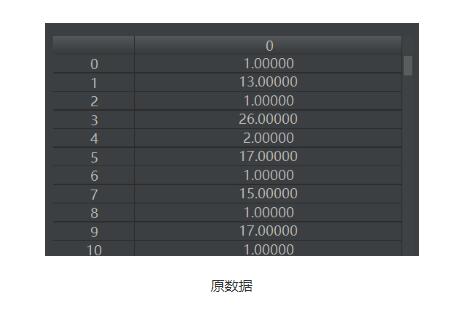django 多數(shù)據(jù)庫及分庫實現(xiàn)方式
定義及路由機制
定義
在settings里面的DATABASES是一個字典,用于定義需要的數(shù)據(jù)庫,如下,一共定義了兩個數(shù)據(jù)庫。
DATABASES = { ’default’: { ’NAME’: ’app_data’, ’ENGINE’: ’django.db.backends.postgresql_psycopg2’, ’USER’: ’postgres_user’, ’PASSWORD’: ’s3krit’ }, ’user1’: { ’NAME’: ’user1_data’, ’ENGINE’: ’django.db.backends.mysql’, ’USER’: ’mysql_user’, ’PASSWORD’: ’priv4te’ } ’user2’: { ’NAME’: ’user2_data’, ’ENGINE’: ’django.db.backends.mysql’, ’USER’: ’mysql_user’, ’PASSWORD’: ’priv4te’ }}
那么什么時候調(diào)用default什么時候調(diào)用users數(shù)據(jù)庫呢,這就需要下面的路由。
路由注冊
class User1Router(object): ''' A router to control all database operations on models in the auth application. ''' def db_for_read(self, model, **hints): ''' Attempts to read auth models go to auth_db. ''' if model._meta.app_label == ’auth’: return ’user1’ return None def db_for_write(self, model, **hints): ''' Attempts to write auth models go to auth_db. ''' if model._meta.app_label == ’auth’: return ’user1’ return None def allow_relation(self, obj1, obj2, **hints): ''' Allow relations if a model in the auth app is involved. ''' if obj1._meta.app_label == ’auth’ or obj2._meta.app_label == ’auth’: return True return None def allow_syncdb(self, db, model): ''' Make sure the auth app only appears in the ’auth_db’ database. ''' if db == ’auth_db’: return model._meta.app_label == ’auth’ elif model._meta.app_label == ’user1’: return False return Noneclass User2Router(object): ''' A router to control all database operations on models in the auth application. ''' def db_for_read(self, model, **hints): ''' Attempts to read auth models go to auth_db. ''' if model._meta.app_label == ’auth2’: return ’user2’ return None def db_for_write(self, model, **hints): ''' Attempts to write auth models go to auth_db. ''' if model._meta.app_label == ’auth2’: return ’user2’ return None def allow_relation(self, obj1, obj2, **hints): ''' Allow relations if a model in the auth app is involved. ''' if obj1._meta.app_label == ’auth’ or obj2._meta.app_label == ’auth’: return True return None def allow_syncdb(self, db, model): ''' Make sure the auth app only appears in the ’auth_db’ database. ''' if db == ’auth_db’: return model._meta.app_label == ’auth2’ elif model._meta.app_label == ’user2’: return False return None
User1Router的路由邏輯是,如果model所屬的app是auth的話,就使用user1數(shù)據(jù)庫,否則就使用其他的;User2Router的邏輯類似。
如何注冊路由
光定義路由程序無法調(diào)用到,還需要注冊到django中,在settings中定義
DATABASE_ROUTERS = [’path.to.User1Router’ , ’path.to.User2Router’]
path.to:是User1Router的完整python包路徑,所以,User1Router不一定要在settings中實現(xiàn),可以在任何地方。
路由機制
那么django是如何選擇其中一個路由的呢?
1. django按照注冊的順序輪詢DATABASE_ROUTERS,所以首先驗證User1Router是否返回了非空字符串,如果是,則使用User1Router;如果不是則接著驗證后面的Router;
2. 同樣驗證User2Router,如果User2Router返回了非空字符串,則使用User2Router;如果不是則使用default數(shù)據(jù)庫;
3. 所以可以看出,路由注冊的順序是會影響最后的結(jié)果的,注冊在前面的路由會優(yōu)先被使用;
自動路由和手動路由
上面定義的Router是自動路由,意思是django會自動輪詢所注冊的路由器,某個model會保存在哪個數(shù)據(jù)庫,是django通過注冊的Router自動獲得的,在編碼中你不需要指定;
手動路由,則是你可以在編碼中指定某個model要保存到哪個數(shù)據(jù)庫。
而且手動路由也有性能方面的優(yōu)點,如果定義了很多個數(shù)據(jù)庫,每次保存或者讀取model都要把輪詢一遍路由列表,顯然效率有些低,如果程序邏輯清楚的知道當前的代碼應該連接哪個數(shù)據(jù)庫,顯示指定的方式顯然效率更高。
手動路由
查詢
使用using函數(shù),參數(shù)就是要查詢的數(shù)據(jù)庫
User.objects.using(’user1’).all()
保存或者更新
使用save的using參數(shù),值就是要使用的數(shù)據(jù)庫
>>> my_object.save(using=’user1’)
刪除
使用delete的using參數(shù)
>>> user_obj.delete(using=’user1’)
分庫技術
下面緊緊介紹分庫的思路。
垂直分庫
即一個app對應一個數(shù)據(jù)庫,上面自動路由的例子就是一個垂直分庫的例子,auth1使用user1數(shù)據(jù)庫,auth2使用user2數(shù)據(jù)庫。當然也可以使用手動路由。
水平分庫
水平分庫建議使用手動路由,因為每個model的分庫機制可能都不一樣,自動路由實現(xiàn)起來有些麻煩會造成性能不高,而手動路由,每個model根據(jù)自己的規(guī)則來獲得不同的數(shù)據(jù)庫。
補充知識:Django實現(xiàn)數(shù)據(jù)庫讀寫分離、一主多從、分庫
讀寫分離
在工程中,通常需要實現(xiàn)mysql讀寫分離。在Django中需要支持讀寫分離的話,只需要很簡單的幾步就可以了。
首先,配置讀庫和寫庫。
在django項目的settings.py中,配置讀庫和寫庫。
DATABASES = { ’default’: { ’ENGINE’: ’django.db.backends.mysql’, ’NAME’: ’WIPS’, ’USER’: ’mysql’, ’PASSWORD’: ’360tianxun#^)Sec’, ’HOST’: ’’, ’PORT’: ’’, }, ’slave’: { ’ENGINE’: ’django.db.backends.mysql’, ’NAME’: ’TEST’, ’USER’: ’mysql’, ’PASSWORD’: ’360tianxun#^)Sec’, ’HOST’: ’’, ’PORT’: ’’, },}
接下來,需要創(chuàng)建數(shù)據(jù)庫的路由分發(fā)類。
可以在appname/utils下創(chuàng)建一個db_router.py文件,在文件中定義db_router類。類中實現(xiàn)讀庫寫庫的選擇。
class DBRouter(object): def db_for_read(self, model, **hints): return 'slave' def db_for_write(self, model, **hints): return 'default' def allow_relation(self, obj1, obj2, **hints): return True
最后,在settings.py中添加路由配置。
DATABASE_ROUTERS = [’appname.utils.db_router.DBRouter’ ]
重新啟動Django就完成了。
這里需要注意的是,Django只完成了讀寫分離,但mysql主庫、從庫的同步操作并不歸django負責,依然需要mysql實現(xiàn)。
一主多從
一主多從的方案在實際應用中是更常見的配置。在上面配置的基礎上,只需要修改幾個地方,就可以實現(xiàn)一主多從了。
首先,修改settings.py,增加全部從庫的設置。
其次,修改db_router類中db_for_read(),下面是隨機選取讀庫的例子。也可以根據(jù)實際的需要,選取不同的調(diào)度算法。
class DBRouter(object): def db_for_read(self, model, **hints): import random return random.choice([’slave’, ’slave2’, ’slave3’])
分庫
當需要不同的app使用不同的庫時,可以利用model中的app_label來實現(xiàn)db的路由。
class DBRouter(object): def db_for_read(self, model, **hints): if model._meta.app_label == ’app01’: import random return random.choice([’app01_slave1’, ’app01_slave2’, ’app01_slave3’]) if model._meta.app_label == ’app02’: return 'app02_slave'
按照上面的操作就很容易實現(xiàn)mysql的讀寫分離、一主多從和分庫了。但這個方法只建議用在小項目上。
以上這篇django 多數(shù)據(jù)庫及分庫實現(xiàn)方式就是小編分享給大家的全部內(nèi)容了,希望能給大家一個參考,也希望大家多多支持好吧啦網(wǎng)。
相關文章:
1. python實現(xiàn)讀取類別頻數(shù)數(shù)據(jù)畫水平條形圖案例2. python 如何停止一個死循環(huán)的線程3. Python編寫nmap掃描工具4. 如何基于python3和Vue實現(xiàn)AES數(shù)據(jù)加密5. PHP獲取時間戳等相關函數(shù)匯總6. ASP.NET MVC前臺動態(tài)添加文本框并在后臺使用FormCollection接收值7. 關于HTML5的img標簽8. Java 基于UDP協(xié)議實現(xiàn)消息發(fā)送9. python 爬取嗶哩嗶哩up主信息和投稿視頻10. php5.6不能擴展redis.so的解決方法

 網(wǎng)公網(wǎng)安備
網(wǎng)公網(wǎng)安備